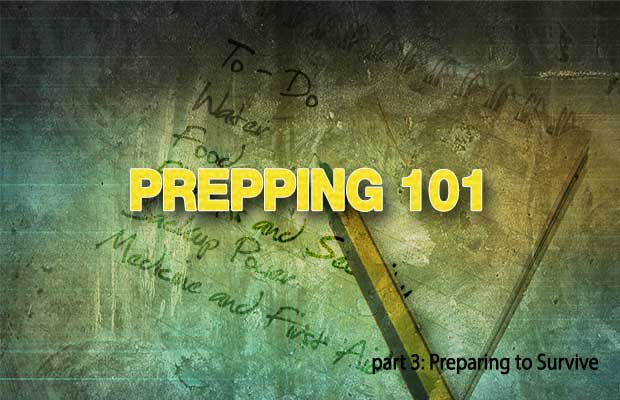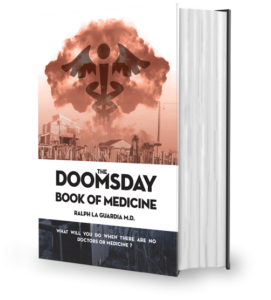Prepping 101 – A Step By Step Plan for How to Get Started Prepping – pt.5
This is the fifth in a series for the beginning prepper on how to get started Prepping. In part one of this series we covered defining your priorities and making sure you have a sufficient store of water. The second article covered planning for long-term food storage and selecting the best firearm for self-defense. In the third installment, we dealt with financial security and having appropriate medical supplies to treat basic injuries. The fourth installment begins to discuss backup power options and how your family can be ready with lifesaving power if the grid goes down.
Step 8 – Home Security
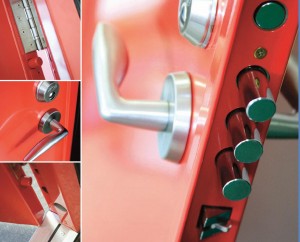
So far we have dealt primarily with how to keep you alive from the standpoint of basic human needs. If an emergency situation occurs, you now have a plan to prepare to feed your family and make sure they have water. This outside of other factors will keep them alive. We also delved into medical supplies for minor injuries that don’t necessarily require a physician’s care and plans for backup power to give you most of the major conveniences of life. At least we should be able to maintain a balance of health with these supplies.
We also got into Firearms in the second article, but this section will deal with the larger threat posed by disaster and that is keeping your home safe. Firearms are certainly a tool we can use, but your home is where most of you will be. This is your castle and there are bad guys out there who might try to take what you have or do harm to you because they don’t have the Rule of Law anymore to stop them. Having a plan for how to make your home as secure as possible is the next step you should prepare for.
Most of us don’t have an underground bunker. We live in subdivisions or cities. Our neighbors, whether we really know them or not are within rock throwing distance from us. Our homes are mostly built with wood or metal frames wrapped in Plywood and covered with siding. These are not castles with stone walls, high towers, a moat filled with starving crocodiles and a long wooden bridge separating us from intruders. Most modern homes can easily be broken into. Even if you don’t have to go through a door, the siding in most common homes can be punched in with a few strikes from a sledge-hammer. We have windows on just about every surface and cheaply made doors. If someone wants to get in, they don’t need a battering ram powered by 50 scruffy Vikings. They only need a little time and some basic tools.
So, knowing all of this, you might be asking yourself “What’s the point”? If your home is so easy to break into, why bother hiding in there and defending it? There are lots of good reasons.
Your home is a castle. It is actually your castle; it’s just that our ideal of castles has changed drastically over the years. Your home is the easiest place to seek shelter. It has most if not all of your supplies and offers familiar surroundings. Your home, whether it is paid for or not is yours and it is worth defending. Your home can keep your family safe from harm in a lot of circumstances and until you are forced to bug out, your home is the best place to be in an emergency.
There are a few relatively simple things you can do to keep your home more secure and keep bad people out or at least significantly delay them from getting in until you are ready for them.
Analyze weaknesses
The two most glaring weaknesses are the doors and windows. Can someone get in by punching a hole in your wall? Of course, but that is not the path of least resistance. In most scenarios, the opportunist is going to be looking for easy ways to get in and get what they want.
If I could have my dream home I would have a door about 6 inches thick mounted on vault hinges with metal plating on the outside. As it is, I don’t even know if my house would hold that door, but there are some tricks you can use to make your door more secure. For starters, a metal door with a metal door frame is much stronger than wood. The frame is only as strong as the screws holding it in though so extra-long screws give you more holding capacity. Your door bolt should be longer than normal as well.
Let’s say that you don’t have the budget to replace your exterior doors with the latest model from Castles R Us, what can you do? There probably isn’t a good way to keep people out of a cheap wooden door or one with decorative glass panels, but you can use as system like Bar-Ricade to give your doors extra rigidity and impact resistance. Another relatively cheap method is to hang cargo netting around the door frame. This will allow someone to enter, but the netting will keep them tripped up long enough for you to get there. Heavy cargo area nets for vehicles have a lot of give so they will spring and cause a good bit of havoc. This isn’t a good solution for every day security, but could save you vital seconds in a collapse type of scenario.
Windows are just about the easiest item to destroy if you are looking to break into someone’s home with a quickness. I think they are second only to large patio doors in terms of overall weakness. There are of course security windows out there, but they are very pricey. An aftermarket option would be security window film. 3M has a line of security window film that you may want to check out. This not only resists break-ins but can keep your windows from caving in heavy winds associated with tornadoes and hurricanes. AND, they can be tinted to keep your home cooler as well.
Even being able to delay people from getting into your home can give you a huge advantage. It might not prevent their intrusion but may just give you the time you need to get there with your trusty firearm and deal with the person.
Step 9 – Hygiene and Sanitation
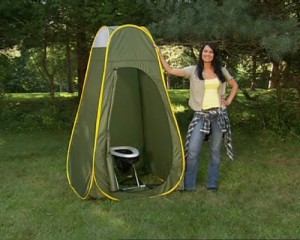
This is one of the most talked-about subjects (no seriously) when it comes to a grid-down type of scenario for a couple of reasons. These are really two separate subjects but they are so closely related I through them together. Hygiene is the practice of keeping yourself clean and disease-free. Sanitation is basically the removal of waste so that you can stay in good hygiene. Also known as the toilet paper dilemma.
Everyone has either thought about or heard someone say “Stock up on toilet paper” and this seems like good advice, right? Who hasn’t been in the bathroom after a decent session of perusing the Readers Digest only to discover there is no toilet paper? Talk about a sinking feeling, but is this the end of the world? Certainly not, but TP is one of those things we consider necessities. Like water, this is something that most of us use every day and should be easy to stock up on, but is one of the first things we run low on. You don’t want your last-minute dash to the store to be for Toilet paper but in the bigger scheme of things, having plenty of Charmin is the least of your problems.
In the Pixar movie, Finding Nemo, they said: “All drains lead to the Ocean” and that isn’t quite right. All drains unless you are on septic lead to the water treatment plant. If for some reason, the drains get damaged or clogged or you don’t have any water to flush, the drains go nowhere. You need a plan for dealing with waste removal if this happens to you.
There are a lot of options for alternative toilet facilities from using your existing toilet to digging a cat hole or a slit trench. It all depends on your situation. If you have water to spare and the lines still work, you can use your toilets just as you would normally. All you need is a bucket of water to pour into the bowl and this will flush everything down just like nothing happened. For long term disasters, this may not be feasible and you may be forced to adopt more “natural” methods. Time of year has a great influence on what those methods will be also because not many people love the idea of going into the yard when it’s dark and freezing outside. The simplest method, in my opinion, is to have a 5-gallon bucket with a toilet seat lid and some small trash bags. Cleanup is easy and you can stay in the comfort of your house.
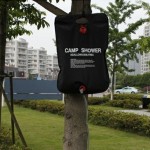 Shower in a bag.
Shower in a bag.
Hygiene is a little different but you should easily be able to stay clean enough to inhibit bacteria and germs with a few simple preparations. I would not count on just a bottle of hand sanitizer to keep you clean and fresh. Baby wipes are a simple and effective method to clean up that doesn’t require a lot of space to store and the wipes themselves can actually be thrown in the fire when you are done.
Camping showers make a great addition to preps as well as extra soap, toothpaste, and toothbrushes. With just a bit of advanced planning, you can give everyone a method of staying clean and healthy. Getting them to take a shower in the backyard might be a little trickier.
I hope this series was helpful and informative. I haven’t covered everything I know, but I feel these articles would give your average person a lot of great ideas to consider if they are new to prepping. Just covering the bases in these 5 articles could drastically change your ability to come through a lot of emergency situations in much better shape.
This is the fifth in a series for the beginning prepper on how to get started Prepping. In part one of this series we covered defining your priorities and making



 Generators come in a wide variety of styles, power outputs and fuel choices. It isn’t uncommon to see generators fly off the shelves at the first sign of a major storm or immediately after a disaster. I have heard of unscrupulous people buying all of the generators at your local big box store and selling them for 4 times as much on the street to desperate individuals. I am all for capitalism, but you don’t want to be on the receiving end of this entrepreneurial spirit when I really need power.
Generators come in a wide variety of styles, power outputs and fuel choices. It isn’t uncommon to see generators fly off the shelves at the first sign of a major storm or immediately after a disaster. I have heard of unscrupulous people buying all of the generators at your local big box store and selling them for 4 times as much on the street to desperate individuals. I am all for capitalism, but you don’t want to be on the receiving end of this entrepreneurial spirit when I really need power.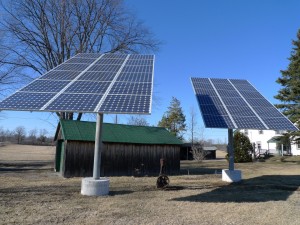 Awesome Solar Panel set up!
Awesome Solar Panel set up!